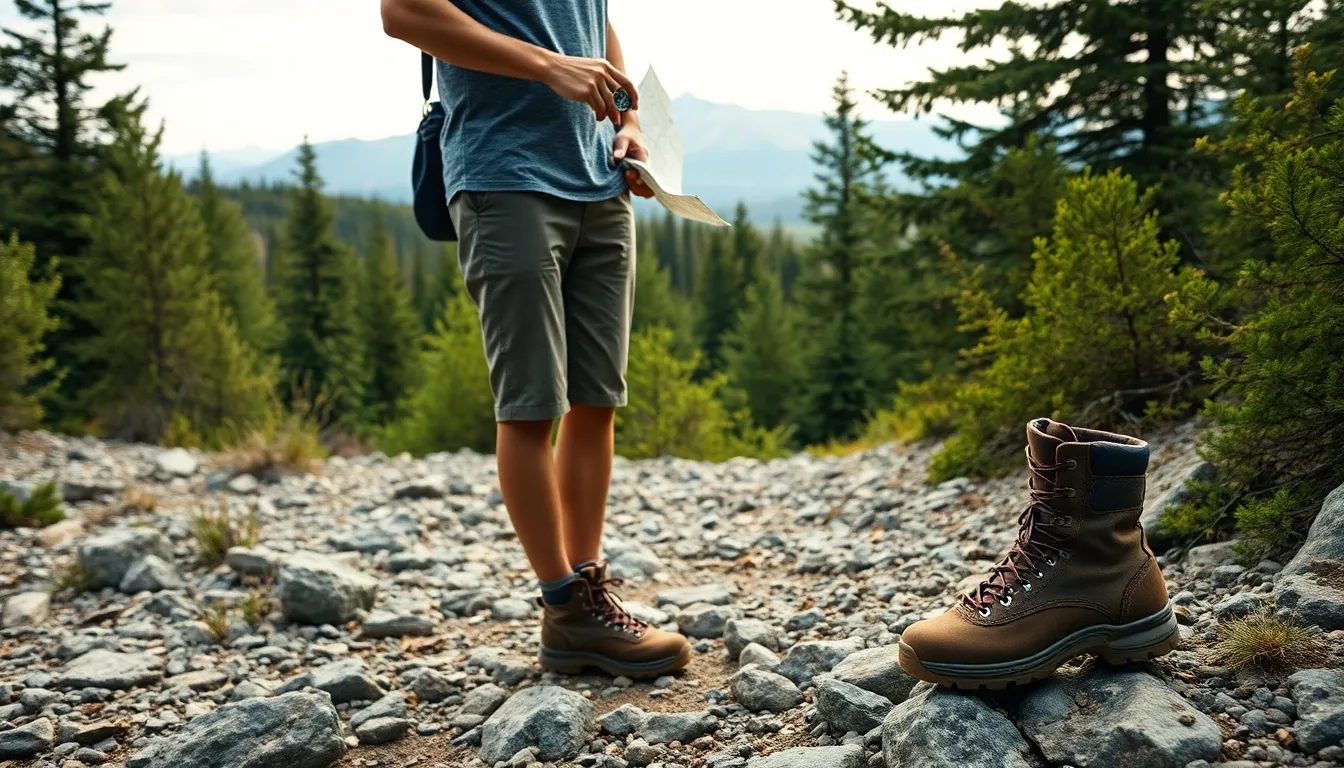Adventure awaits around every corner, but are you ready to tackle it head-on? Whether it’s scaling mountains or navigating through dense forests, having the right gear can mean the difference between a thrilling escapade and an unexpected trip to the ER. Imagine being stuck in the middle of nowhere without your trusty water bottle—talk about a thirst for adventure!
Table of Contents
ToggleUnderstanding Adventure Essentials
Adventure essentials consist of crucial gear and equipment necessary for safe and enjoyable outdoor activities. These items ensure that participants remain comfortable, hydrated, and adequately prepared for potential challenges.
Definition of Adventure Essentials
Adventure essentials refer to fundamental tools and supplies that enhance safety and comfort during outdoor excursions. Examples include hydration systems, navigational tools like maps or GPS units, appropriate clothing layers, first aid kits, and food provisions. Many outdoor enthusiasts prioritize carrying these essentials to mitigate risks encountered while exploring nature. Each item plays a unique role, contributing to a successful adventure experience.
Importance of Being Prepared
Being prepared for outdoor activities holds significant importance. Preparedness minimizes risks associated with unpredictable weather, dehydration, or injury. Carrying essential gear increases confidence and allows adventurers to focus on enjoyment, rather than survival. Essential items, like water bottles and first aid kits, directly affect health and safety. Adventurers who take the time to plan for their trips often find themselves more resilient to challenges. Proper preparation lays the groundwork for memorable and safe adventures.
Essential Gear for Outdoor Adventures

Equipping oneself with the right gear enhances outdoor experiences significantly. This section discusses key categories of essential gear.
Clothing and Footwear
Selecting appropriate clothing protects against varying weather conditions. Layering is crucial for temperature regulation; moisture-wicking base layers, insulating mid-layers, and waterproof outer shells offer versatility. Choosing breathable hiking pants and durable shorts adds comfort during activities. Footwear plays an equally important role; hiking boots provide ankle support while trail shoes enhance agility. Opting for moisture-wicking socks prevents blisters during long treks. Additionally, sun protection gear like hats and sunglasses shields against UV rays.
Navigation Tools
Utilizing navigational tools ensures safety and avoids getting lost. A reliable map serves as a cornerstone for orientation. Compasses offer directionality when technology fails. For added security, GPS devices and smartphone applications provide real-time positioning. Learning to use these tools enhances confidence in unfamiliar terrain. Having a backup power source like portable chargers keeps devices operational. Familiarity with the area contributes to a safer, more enjoyable adventure.
Safety Equipment
Carrying safety equipment is vital for risk mitigation during outdoor activities. First aid kits should contain essential supplies like bandages, antiseptic wipes, and pain relievers. It’s wise to include tools for signaling emergencies, such as whistles and portable lights. Fire starters and multi-tools come in handy for various situations, ranging from cooking to repairs. When exploring remote areas, a personal locator beacon ensures quick rescue if needed. Staying prepared for the unexpected fosters a more secure adventure experience.
Local Knowledge and Planning
Planning an adventure involves more than packing gear. Understanding the local environment enhances safety and enjoyment.
Researching Your Destination
Start by exploring the area’s weather conditions. Research seasonal variations to pack appropriate clothing. Examine local wildlife to know potential hazards and safety precautions. Investigate terrain types to select suitable trails. Engage with local guides or online forums for insider tips on must-see spots and hidden gems. Checking local regulations might reveal necessary permits or restrictions. Always consider cultural practices to show respect for indigenous peoples.
Creating an Itinerary
Outline a day-by-day plan for your adventure. Prioritize essential destinations based on interests and logistics. Include time for breaks, meals, and relaxation to prevent exhaustion. Incorporate alternative routes and activities in case of unexpected changes. Share your itinerary with friends or family for safety. Note emergency contact numbers and local services. Staying flexible allows for spontaneity while ensuring safety.
Nutrition and Hydration
Nutrition and hydration play critical roles in successful outdoor adventures. Proper fuel and fluid intake maintain energy levels and enhance performance.
Packing the Right Food
Packing nutritious food ensures adventurers have the energy needed for demanding activities. High-calorie items, such as nuts, energy bars, and dried fruits, provide quick energy boosts. Opting for lightweight meals, like freeze-dried options, minimizes pack weight while still delivering essential nutrients. Including a balance of carbohydrates, proteins, and healthy fats can sustain endurance. Preparing meals in advance saves time during trips, allowing for a quicker setup at campsites. Variety adds excitement, so incorporating different flavors and textures keeps morale high.
Importance of Hydration
Maintaining hydration prevents dehydration, which can impair physical performance and mental clarity. Carrying enough water, typically recommended at least 2 liters per person per day, is crucial. Assessing local water sources can offer additional hydration options. Using a water filter or purification tablets ensures safety when sourcing water from streams or lakes. Monitoring signs of dehydration, such as fatigue or dizziness, helps avoid serious complications. Drinking regularly, even before thirst sets in, promotes optimal hydration levels throughout the adventure.
Environmental Considerations
Environmental awareness enhances outdoor experiences. Responsible adventurers reduce their impact on nature by following established guidelines.
Leave No Trace Principles
Leave No Trace principles guide outdoor ethics. These seven core principles include planning ahead, traveling on durable surfaces, and minimizing campfire impacts. Adventurers should pack out what they pack in, ensuring no waste is left behind. Staying on trails protects vegetation and wildlife habitats. Also, respecting wildlife while avoiding feeding animals keeps ecosystem balances intact. Adopting these practices ensures natural areas remain pristine for future visitors.
Respecting Wildlife
Respecting wildlife proves essential for maintaining healthy ecosystems. Observing animals from a distance avoids undue stress and disruption in their natural behaviors. Never approach or feed wildlife, as this can create dependency on human sources of food. Travelers must store food properly to prevent attracting animals to campsites. Understanding local wildlife guidelines fosters safer interactions and highlights the importance of preserving natural habitats. Prioritizing wildlife conservation ensures outdoor spaces remain vibrant and dynamic for all to enjoy.
Being well-prepared for outdoor adventures is essential for safety and enjoyment. The right gear not only enhances the experience but also mitigates potential risks. From appropriate clothing and footwear to reliable navigation tools and safety equipment, each element plays a crucial role in ensuring a successful outing.
Understanding the local environment and adhering to responsible adventuring practices are equally important. By following the Leave No Trace principles and respecting wildlife, adventurers can preserve natural spaces for future generations. With the right preparations in place, individuals can focus on the thrill of exploration while enjoying the beauty of the great outdoors.





